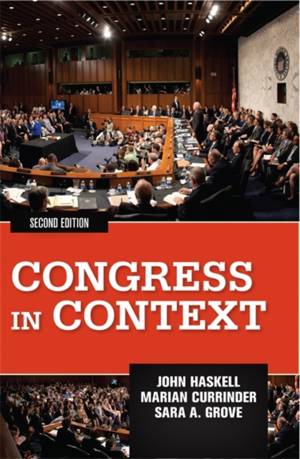
- Afhalen na 1 uur in een winkel met voorraad
- Gratis thuislevering in België vanaf € 30
- Ruim aanbod met 7 miljoen producten
- Afhalen na 1 uur in een winkel met voorraad
- Gratis thuislevering in België vanaf € 30
- Ruim aanbod met 7 miljoen producten
Omschrijving
The U.S. Congress is by the far the least popular (and most misunderstood) branch of the federal government. Congress in Context de-mystifies the institution, giving students a comprehensive and practical understanding of Congress and the legislative process. This book takes a different approach to the study of Congress than other texts. Usually Congress is treated in isolation from the rest of the government. But the Framers of the Constitution explicitly intended for the branches of government to be interdependent. Congress in Context introduces readers to Congress's critical role in the context of this interdependent system. Using the metaphor of a board of directors, the authors explain the three key roles of Congress within the federal government (authorizing what government does, funding its activities, and supervising how it carries out the laws Congress passes) and shows students how Congress interacts with the rest of the government to exercise these powers.
The thoroughly expanded and revised second edition features brand-new chapters on Congress and the courts and Congress and interest groups. It also includes expanded coverage of Congress's relationship with the executive branch, campaign finance, and today's major budget issues. Grounded in the latest political science literature coupled with contemporary examples, Congress in Context offers students an informed yet accessible introduction to how the legislative branch carries out its duties.
Specificaties
Betrokkenen
- Auteur(s):
- Uitgeverij:
Inhoud
- Aantal bladzijden:
- 504
- Taal:
- Engels
Eigenschappen
- Productcode (EAN):
- 9780813347561
- Verschijningsdatum:
- 7/01/2014
- Uitvoering:
- Paperback
- Formaat:
- Trade paperback (VS)
- Afmetingen:
- 152 mm x 229 mm
- Gewicht:
- 703 g

Alleen bij Standaard Boekhandel
Beoordelingen
We publiceren alleen reviews die voldoen aan de voorwaarden voor reviews. Bekijk onze voorwaarden voor reviews.











